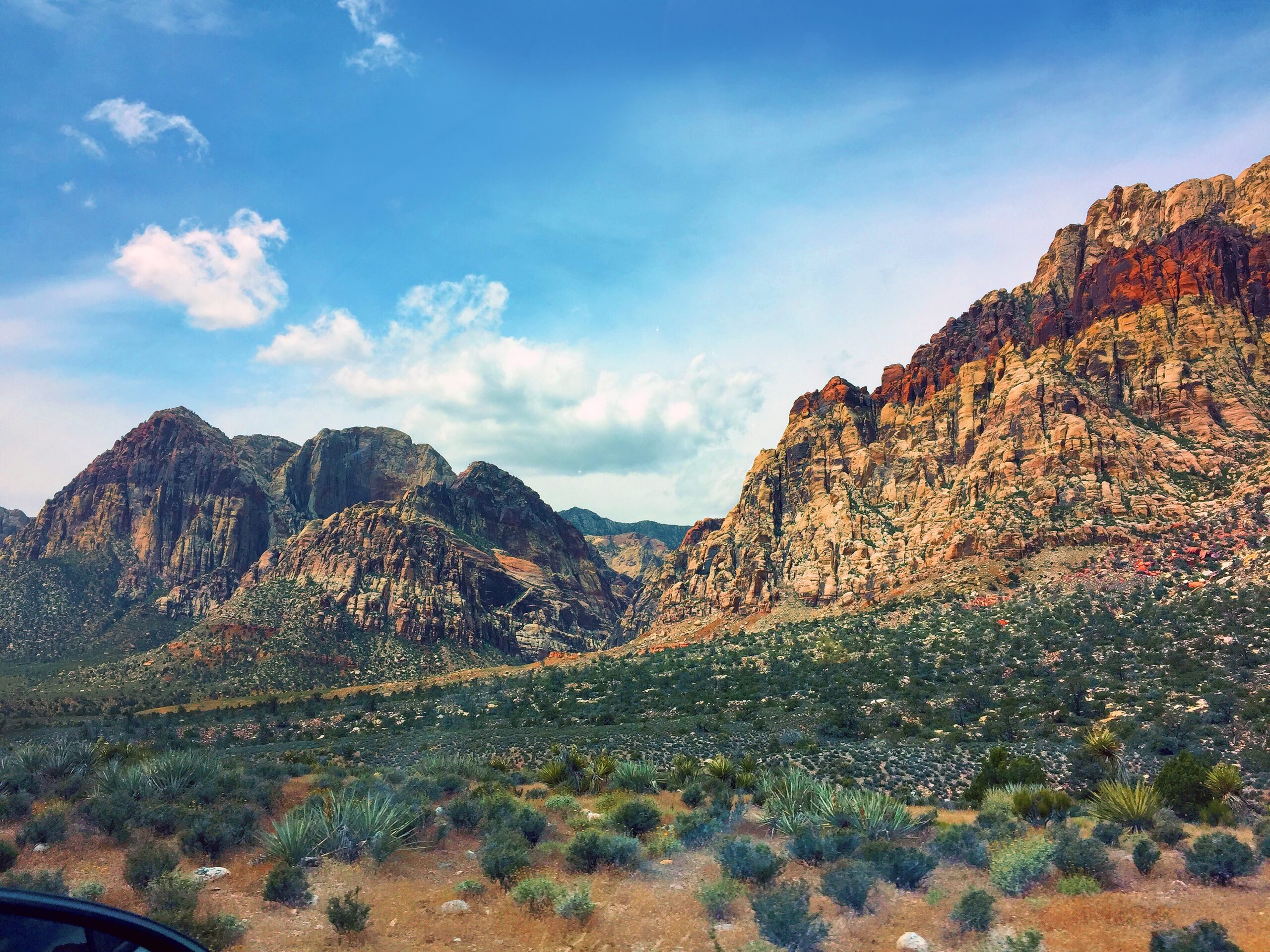Imagine being in a survival situation, surrounded by vast, unfamiliar terrain. You find yourself overwhelmed, not knowing where to begin or what to prioritize. In such a scenario, evaluating the terrain becomes crucial for your survival. It is the key that unlocks nature’s secrets and guides you towards safety. This article will provide you with essential insights on what to look for when evaluating terrain in a survival situation. From identifying water sources to recognizing potential dangers, you’ll gain the knowledge needed to navigate and conquer any challenging landscape that may come your way.
Topographic Features
Elevation
When evaluating the terrain in a survival situation, one of the key factors to consider is the elevation of the area. Elevation refers to the height above sea level and can have a significant impact on the climate and vegetation of an area. Understanding the elevation can help you gauge the temperature, precipitation levels, and overall conditions you may encounter.
Slopes
Slopes are another important topographic feature to assess when deciding on a suitable location for survival. Steep slopes can pose challenges when it comes to mobility and navigation, while gentle slopes can provide better accessibility. You will want to consider your own physical capabilities and the potential risks associated with traversing different slope angles.
Ridges and Valleys
Ridges and valleys are natural formations that can greatly affect your survival experience. Ridges offer opportunities for elevated vantage points, which can be advantageous for scouting or monitoring your surroundings. Valleys, on the other hand, can provide shelter from strong winds and offer potential water sources.
Water Sources
Finding a reliable source of water is paramount in a survival situation. The presence of rivers, lakes, streams, or even underground water sources can significantly impact your chances of survival. Assess the proximity and accessibility of these water sources, as well as their suitability for drinking or purification, before settling on a location.
Vegetation and Cover
Types of Vegetation
Observing the types of vegetation in an area can give you valuable insights into the available resources for food, shelter, and other needs. Look for a diverse range of vegetation, including trees, shrubs, and grasses, as it indicates a healthy and productive ecosystem. Familiarize yourself with edible plants that can provide sustenance and medicinal plants that can help treat ailments.
Density
The density of vegetation can affect your ability to navigate through an area and find suitable shelter. Dense vegetation can serve as a natural barrier, offering protection from the elements and potential threats. However, it may also impede movement and limit visibility. Consider the density of the vegetation to strike a balance between cover and accessibility.
Coverage
The coverage of vegetation refers to the extent to which an area is covered by plants. A high coverage area can provide more opportunities for concealment and shade, while low coverage areas may offer fewer hiding spots. Assess the coverage to determine how well you can blend into the environment and whether it allows for safe movement and exploration.
Edible Plants
Identifying edible plants in your surroundings is crucial for sustaining yourself in a survival situation. Familiarize yourself with common edible plants in the region, learn how to identify them accurately, and understand any preparation or cooking methods required to make them safe for consumption. It is essential to be cautious and certain of the plants’ edibility before consuming them.

Accessibility
Navigation
Navigating in unfamiliar terrain can be challenging, especially when your survival depends on it. Pay attention to natural landmarks such as mountains, rivers, or distinctive rock formations that can serve as reference points. Carry a map, compass, or any other navigational tools to assist you in orienting yourself and plotting a safe course.
Pathways
Evaluating the presence of existing pathways or animal trails can provide clues about the accessibility of an area. These pathways are often created by animals searching for food and water, and they can lead to potential resources or safer routes. However, be cautious of relying solely on these pathways, as they may not always lead you to the best location for survival.
Obstacles
When assessing the terrain, it is important to identify any potential obstacles that could hinder your movement or pose a risk to your safety. Rocks, fallen trees, ravines, or marshy areas can make travel difficult and increase the chances of injuries. Plan your route accordingly, and be prepared to adapt and adjust your path if necessary.
Shelter
Natural Shelters
Nature can provide various opportunities for finding shelter in a survival situation. Look for natural formations such as caves, rock overhangs, or dense vegetation that can offer protection from the elements. These natural shelters can help conserve body heat, shield you from rain or snow, and provide a sense of security.
Manmade Structures
In some survival situations, you may come across manmade structures that can serve as temporary shelter. Abandoned buildings, huts, or even vehicles can provide a more substantial form of protection against the elements. Inspect these structures for stability, security, and any potential hazards before determining whether they are suitable for use.
Protection from Elements
When evaluating potential shelter locations, consider how well the area can protect you from the elements. Look for areas shielded from strong winds, excessive sunlight, and heavy rainfall. Assess the suitability of the terrain for setting up a shelter, such as flat ground or a location with natural windbreaks, to improve your chances of staying dry and comfortable.

Wildlife
Identifying Animal Signs
Understanding the wildlife in your surroundings can help you gauge the availability of potential food sources and identify potential dangers. Look for animal tracks, scat, or even feathers to determine which species are present in the area. These signs can provide insights into the local ecosystem, as well as help you understand the behavior and habits of different animals.
Dangerous Species
While most wildlife will generally avoid human contact, it is important to be aware of any dangerous species that may pose a threat to your safety. Research the region beforehand to identify any potentially venomous snakes, aggressive animals, or large predators that may inhabit the area. Take precautions to avoid encounters and learn how to respond appropriately if faced with such situations.
Hunting Opportunities
In a survival situation, hunting can be an essential skill for acquiring food. Assess the wildlife in the area to determine if there are viable hunting opportunities. Be mindful of any regulations or laws regarding hunting, and only engage in hunting activities if you have the necessary skills and tools. Remember to respect the ecosystem and only take what you need for sustenance.
Visibility and Concealment
Lines of Sight
Having good visibility of your surroundings can greatly enhance your situational awareness and security. Evaluate the terrain for elevated areas that provide unobstructed lines of sight, allowing you to observe potential threats or opportunities from a distance. This increased visibility can provide early warning signs and give you time to react accordingly.
Cover and Concealment
While visibility is important, it is equally crucial to have areas of cover and concealment within the terrain. Look for natural elements such as vegetation, rocks, or depressions that can provide hiding spots and make you less visible to potential threats. Balancing visibility and concealment is key to maintaining a safe and secure position.
Camouflage
Camouflage involves blending in with the surroundings to avoid detection. Assess the terrain to determine if it offers natural opportunities for camouflage, such as foliage or rock formations that match your clothing or gear. Improving your camouflage can help you remain inconspicuous and increase your chances of survival by minimizing the risk of being detected by others.
Security
Defensive Positions
When evaluating the terrain, consider potential defensive positions that can provide protection in case of an attack or threat. Look for elevated areas with natural barriers, such as cliffs or steep slopes, that can limit access and make it more difficult for others to approach. Assess the terrain for features that can enhance your defensive capabilities and provide a tactical advantage if needed.
Early Warning Systems
Early warning systems are crucial for maintaining security in a survival situation. Identify natural features that can serve as early warning signs, such as changes in vegetation, sounds of wildlife, or patterns of movement. By understanding the terrain and its natural indicators, you can increase your chances of detecting potential dangers and responding proactively.
Vantage Points
Vantage points offer strategic advantages by providing a wider view of your surroundings. Look for elevated areas that offer clear lines of sight and can act as observation posts. These vantage points allow you to monitor the terrain, detect potential threats, or scout for resources. Utilizing these positions effectively can greatly enhance your overall security.
Resources
Food
Assess the availability of food resources in the terrain to ensure your long-term survival. Look for signs of edible plants, fruit-bearing trees, or areas with abundant wildlife. Additionally, consider other sources of food such as fishing spots, insect nests, or small game traps. Understanding the available food resources and how to access them will be vital for sustaining yourself throughout your survival ordeal.
Water
Finding a reliable source of water is one of the most critical considerations in a survival situation. Pay attention to streams, rivers, lakes, or underground springs, as these can provide essential hydration. Evaluate the quality of the water source and consider purification methods to eliminate any potential contaminants. Remember to conserve water and ration your consumption to ensure long-term survival.
Wood and Fuel
Having access to wood and fuel is essential for various survival activities, such as fire-making, cooking, or shelter construction. Evaluate the availability of trees, fallen branches, or deadwood in the terrain that can be used as a fuel source. Consider the types of wood available and their suitability for creating a fire that can provide warmth, light, and a means of cooking food.
Natural Hazards
Flood Zones
Identifying potential flood zones is crucial for your safety and survival. Evaluate the terrain for low-lying areas, riverbanks, or regions with signs of erosion that could indicate a higher risk of flooding. Avoid setting up camp in these areas and prioritize finding higher ground to reduce the chances of being caught in a sudden flood.
Earthquakes
Although earthquakes are unpredictable, it is important to be aware of areas prone to seismic activity. Research the region and identify any fault lines or historical earthquake zones to assess the risk. Be mindful of potential hazards such as landslides or falling debris that may accompany an earthquake, and plan your shelter and location accordingly.
Landslides
Terrain evaluation should include identifying areas susceptible to landslides. Look for signs such as steep slopes, soil erosion, or previous landslide scars. Avoid setting up camp near unstable slopes or areas with loose soil that may be prone to landslides. Prioritize safety and choose a location that minimizes the risk of being affected by these natural hazards.
Climate and Weather
Temperature
Understanding the temperature patterns in the terrain is crucial for your survival. Evaluate the average temperatures during the day and night to determine the appropriate clothing and gear to pack. Consider the seasonal variations and temperature extremes to prepare adequately for the conditions you may encounter.
Precipitation
Assessing the precipitation levels in the terrain is essential for planning shelter, water management, and resource availability. Look for signs of erosion, water accumulation, or vegetation patterns that indicate regular rainfall. Consider the average precipitation amounts and the frequency of rainfall to anticipate any challenges or opportunities it may present.
Seasonal Changes
Seasonal changes can significantly impact your survival experience. Evaluate the terrain for signs of seasonal variations, such as changing vegetation, wildlife behavior, or temperature fluctuations. Understanding these patterns can help you adapt your survival strategies, optimize resource utilization, and prepare for any potential challenges each season may bring.
In any survival situation, carefully evaluating the terrain is essential for making informed decisions and increasing your chances of success. By thoroughly assessing topographic features, vegetation, accessibility, shelter options, wildlife, visibility, security, available resources, natural hazards, climate, and weather conditions, you can better understand the environment and adapt your strategies accordingly. Stay observant, plan ahead, and utilize the features of the terrain to your advantage to overcome the challenges and thrive in any survival scenario.

